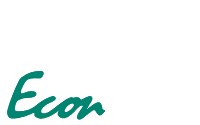97-01
Universität Siegen
Fachbereich Wirtschaftswissenschaften, Wirtschaftsinformatik und Wirtschaftsrecht
Volkswirtschaftliche Diskussionsbeiträge
Rüdiger Pethig
Agriculture, Pesticides and the Ecosystem
Economists have a good understanding of intra-economic interdependence and a mature methodology of modeling it. Ecologists focus on the complex and sensitive interactions of species in ecosystems. This paper's objective is to suggest a new micro-foundation of ecosystem analysis based on economic methodology, to integrate the analysis of the ecosystem and the economy and focus on the interface of ecosystem-economy relations. Agriculture forms a major part of this interface. The basic assumption is that in the short period the individual organisms of all species behave as if they optimizes their costly offensive and defensive activities given the other organisms' activities (Nash-behavior).
We consider an ecosystem with three species in a unidirectional food chain: buzzards feed on mice, mice feed on grain, and grain feeds on solar energy, and there is a fourth species, in fact, the humans, who feed on grain, too. Humans intervene in the ecosystem in various ways. They can grow grain by using seed, farm labor, pesticides and possibly nature conservation measures to maintain the buzzard habitat. A short-run ecosystem equilibrium is characterized, and it is shown, in particular, how this equilibrium depends on farming activities. We then link this ecosystem model to a simple model of an agricultural economy. Both systems are required to settle for an equilibrium simultaneously. From the economic perspective the ecosystem turns out to induce positive and negative externalities related to agricultural production and in consumer 'green' preferences.
The inefficiencies of the competitive economy are identified and some (limited) possibilities to restore efficiency through corrective taxes or subsidies are briefly discussed. We also outline how short-run equilibria are connected through ecosystem stock-flow relationships. Due to the complexity of the intertemporal analysis the resulting ecosystem dynamics cannot be characterized in general analytical terms. It is an item for future research to study the dynamics in numerical analysis to understand under which conditions the joint ecological and economic system is driven toward a (sustainable) steady state.
